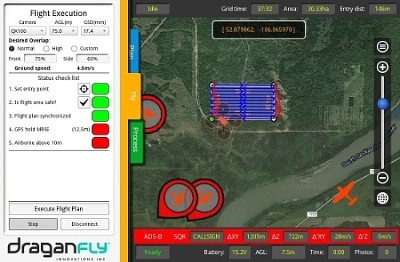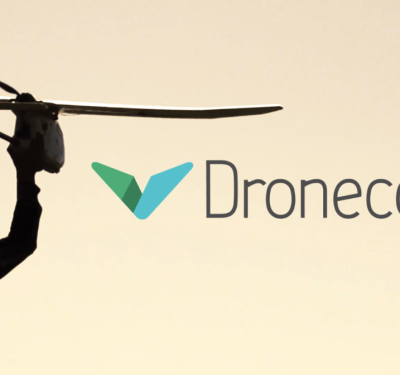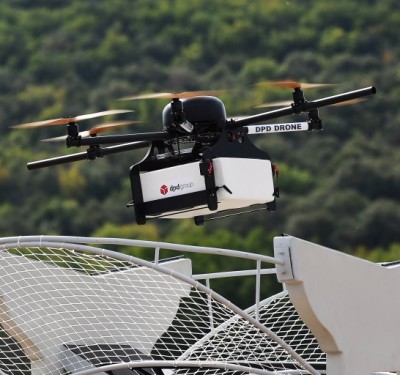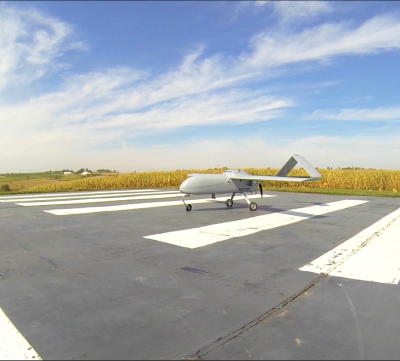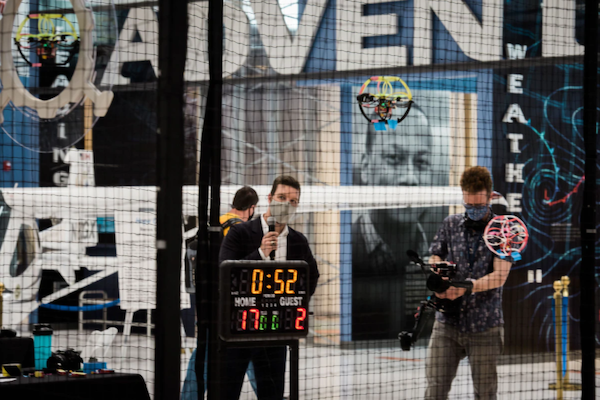
A drone soccer tournament takes off in Colorado. Photo courtesy of Greg Lowe.
COVID has made it rough to be a student. But this May, high schoolers in Colorado participated in North America’s first academic drone soccer competition. Leagues, a summer camp and a national rollout are scheduled to follow, with the goal being to build education and enthusiasm among the next generation of professional fliers.
“Wings Over the Rockies: Exploration of Flight,” a flight experience facility in Englewood, Colorado, hosted this debut tournament. Per the rules, teams of three to five stood outside a 10 feet by 10 feet by 20 feet netted “airfield” and attempted to score points by steering mini-quadcopters through a vertical hoop. As befits a competition mirroring a contact sport and involving objects hurtling toward each other, the drones were encased in plastic exoskeletons, a look similar to the UAS you can find exploring mines and other tight spaces.
Sounds like fun. But there’s a purpose to the game, explained Major Kyle Sanders, vice president and co-founder of U.S. Drone Soccer. “Students are excited because they can go straight from what they’ve learned in the high school classroom into really engaging high-paying careers. We’re trying to open the doors to these opportunities for kids who don’t even know that they exist.”
Man with a Plan
Major Sanders’ sport drones obviously don’t resemble the C-130s he flew in Iraq and Afghanistan. But, he noted, “I’ve been involved in aerospace education for my whole career and had the opportunity to be a director of an air show. And I brought the drone racing organization in because I saw that that was something that was up and coming. And a lot of teachers and students were very interested in drones.”
The sport first appeared in South Korea in 2016. “When we found out about drone soccer out of South Korea, it [was] an accessible way to get new pilots, build community of teams and coaches and referees, and really build out a new on-ramp for kids who had an interest in drones.”
Besides the “Wings” facility, Colorado offers the Air Force Academy, aerospace companies and willing secondary schools that may even have classes in aerospace engineering. “We spent the last year developing the technology and curriculum,” Sanders continued. “Here in the U.S., we’ve worked to make it as easy to use for schools as possible.” Test runs began in January; the games began in May.
Sanders expanded on the rules. Three equal teams fly “essentially a three-inch racing drone” from iflight RC that’s been custom-designed using open source racing technology. The Striker—one drone on each team—has a special flag on it. There are three three-minute sets in a match, followed by timeouts to repair any “battle damage” to the low-cost vehicles. Best two out of three wins the meet.
Scaling Up
Sanders is enrolling schools across Colorado, targeting sixth to twelfth graders. “We’re trying to capture students who have the knowledge and dexterity to be able to really engage fully. The school purchase the US drone soccer curriculum, and then the students learn how to build, operate and fly. We have professional development training for teachers, we have created lesson guides that we’re fleshing out. We want to make it as easy as possible, so we pair drone instructors up with teachers and provide that support throughout the school year.
“We just launched our summer camps, leading up to the state games, and we’re getting ready for a national rollout. The path goes straight from the high school to collegiate drone teams all the way to the World Cup, so they can really grow into all the different applications of this technology.”
Angel investors are being sought to scale this effort. “Our goal is to have leagues all over the country building towards a U.S. team, and we’ll begin hosting international competition next year,” he offered. But that doesn’t preclude students playing against local rivals, say, every Friday night.
Sanders references his own flight path as inspiration for tomorrow’s drone pilots. “When I was a kid, I went to camp. And that sent me down this road of becoming a space systems engineer and a professional aviator. That little bit of inspiration and mentorship as a kid goes a long way.”


